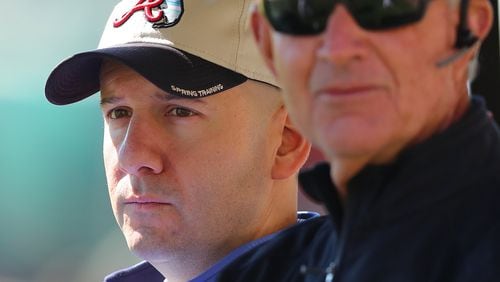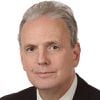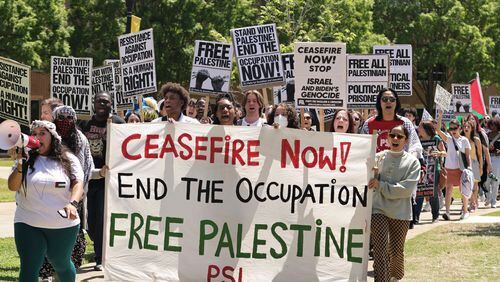In the midst of the MLB draft, Braves general manager John Coppolella slipped away from his team’s war room at the Cobb Galleria Centre for an extended conversation regarding No. 1 pick Kyle Wright, this season and the state of the Braves’ rebuild. Part 1 is presented here.
Should we see a college pitcher being taken in the first round and think, “That’s because the Braves know they need help at the major-league level sooner,” or was it just the way the draft fell?
It’s the way the draft fell. We love Kyle Wright. We’ve loved him for a long time. We’re very happy to get him in that spot.
Jason McLeod, the Cubs’ head of scouting, did an interview last year with Baseball Prospectus saying their rebuild, famous for stockpiling bats, was more an accident than by design. Yours has obviously been by design with the pitching.
Yes and no. You’ve got to look at the availability of players and you’ve got to look at the timing. When Kris Bryant was in high school, we didn’t have slotting. So a really good player went to college and the Cubs were fortunate to have him at Pick No. 2. I don’t know that there’s that many Kris Bryants coming along now that we have slotting. I think a lot of the best high school players sign because you can move money around.
Because they can get more that they would have gotten in the old days?
Correct. I think there was more of an availability of bats at that time. John Hart and I have searched for college bats for years. But Kyle Wright, or whoever we take, is so much better for us. We don’t want to force a college bat. We wouldn’t do that to our scouts. These guys work hard all year. John and I don’t force things upon them. We take the temperature of the room and then as a group we make the best decision for the Atlanta Braves.
So you’re happy with the way this draft played out?
Thrilled. We got the best pitcher in the draft. We got somebody we love who’s from here and who we hope will be here fairly quickly. We’re not going to put expectations on him that he’s got to be here by X-date, but this is a great kid from a great family. Father is a long-time high school baseball coach; mother is an engineer at NASA in Huntsville; older brother is also a baseball coach – this is a good baseball family. This is a good Southern kid.
Plus you’re loading up on Vanderbilt players. You’re Nashville’s team if nothing else.
(Scouting director) Brian Bridges and I went to go visit Kyle before spring training in January. We sat down with him for about an hour and a half. It just so happened that Dansby Swanson was working out at Vanderbilt at the time of the interview. It was just serendipitous timing, but obviously Dansby’s a big fan of his. Look, if we can get really good players who’ll have an impact for us – he has a chance to start a playoff game for us.
Does taking a college arm with the No. 5 pick mean you’re backing off what you did in the past two drafts by taking high school pitchers?
Not at all. When you look at the landscape of pitching, you can never have enough pitching. You can never have enough pitching.
And this kind of puts it on different tiers. Wright doesn't figure to stay in rookie ball long.
We took high school pitching with our first two picks in 2015 and with our first three picks in 2016. If the best guy on our board was a high school pitcher, we’d have gone with him. But we felt Kyle was the guy and it happened that he was a college guy. Does it coincide nicely with our return to Braves baseball and winning? Yeah, it does. But I don’t think it says anything about the arms we’ve taken, which we love. It’ll just add to that. Not all of these arms are going to pitch for the Braves. Some are going to get traded. Some are going to get hurt. Some are not going to perform. Right or wrong, we spent $30 million to bring in Bartolo Colon, Jaime Garcia and R. A. Dickey. My hope is that a couple of years from now, we’ll never have to bring in free agent pitching.
Since you brought it up, what’s your appraisal of how that outlay has gone?
Good and bad. Hard to put a positive spin on parts of it, easier to put a positive spin on other parts of it. It’s something that, when you go into that market, you know there’s risk. What I’d love to do is have a homegrown starting rotation of guys who come through the Braves system. Obviously Julio (Teheran) has been that guy. Mike Foltynewicz was a trade, but I still think of him as somebody who came up through the Braves system. We saw Sean Newcomb debut on Saturday, and we hope we can keep graduating (pitchers). Look, it’s not going to be perfect. Every guy is not going to have a flawless path to major-league stardom, but we like the talent and we like the people that we have.
Of all the trades you’ve made, the most polarizing was the Andrelton Simmons deal. But it’s fair to say you wouldn’t have given up like that if you hadn’t gotten something you really wanted. How was it watching Newcomb having that kind of game his first time out?
Watching as a GM, you feel happy for the kid and for his family. You feel happy for the pitching coaches – Dom Chiti and Dave Wallace – who worked with him and all the people in our player development department. You feel happy for John Hart, who signed off on the trade and who has a lot of faith in me and our baseball operations group. I try not to be too reactive, meaning that if he had a bad start it doesn’t mean it’s a bad trade. I think the Sean Newcomb story is going to be told in the next 10 years, not in the next 10 starts.
Still, it had to be nice to see, especially given the issues with the starting pitching.
It was great to see. Ultimately, our job is to try to build the best 25-man roster we can. Whether that’s something that you do every year immediately or whether you try to build something up that’s sustainable and has real true upside – I think that’s more the approach we take. We’ve said a lot of times, “Yeah, it’s great if you get 80 wins,” and I want to win more games every year, but I think we’ve got to do what’s best for the Braves organization. Short-term thinking got us into a tough situation. Now we’re going (with) long-term thinking, and sometimes that means tough trades.
If you’d had two more years left at Turner Field, would you have done what you did with Colon and Dickey and Garcia, or did you feel some obligation to put a presentable product out here for a new audience in a new stadium?
Being in a new stadium adds pressure to win. But there’s a lot of pressure John Hart and I put on ourselves. We don’t like losing. John’s won a lot of places. I won a lot when I was with the New York Yankees. We know our fans have suffered through a couple tough years. We want to pull out of it as much as we can. We liked two things about those signings: No. 1, it didn’t cost us any of our prospects; No. 2, it wasn’t a long-term deal where it’s going to block anybody. It was a way for us to get better without giving up anything except money. The fact that our parent company was willing to make that financial commitment shows they want to win, too. Where we were when John and I took this over, we could not have won. Even if our ownership gave us the green light for $300 million, we could not have won.
Because …
Because if you go in the free agent market, you get a lot of mismatched parts. You get guys on the back end of deals. You look at the New York Yankees, who have been over $200 million in payroll the last 10 years. They rebuilt last year. THEY did. And now they’re winning with guys like Aaron Judge and Gary Sanchez. Where’d they come from? Were they free agents? They were homegrown. The years they won, when I was there, they won with homegrown players – Derek Jeter, Jorge Posada, Bernie Williams, Andy Pettitte, Mariano Rivera. You can try to go with star free agent players, but if you don’t draft them or trade for them, you’re probably not going to get them.
Dayton Moore said last year it was important in what happened with Kansas City for his young guys to learn how to play together in the minor leagues and learn how to win together. Is that what you hope will happen here?
I think it absolutely did happen at (Class A) Rome last year. Youngest team in the league in over a decade, under .500 in the first half, won the second half and stormed through the playoffs beating teams remarkably older than them. They were kids who were high draft picks, kids that were young for their age, kids that got better, kids that won together. I think Rome is one example of that, but in a lot of ways it’s a microcosm of our farm system. Ultimately, you don’t care about wins and losses in the minor leagues. You would like to win, but the most important thing is moving prospects into the appropriate places. But the fact that all these guys were at Rome and they won was good.
Dayton brings up a good point, but you need talent to win. They made trades to get James Shields, (Ben) Zobrist, (Johnny) Cueto, (Alcides) Escobar, (Lorenzo) Cain. How do you make those trades? You have to have talent to give back. Who did we have to trade 2 ½ years ago? We traded two really good one-year players – Jason Heyward and Justin Upton – and were satisfied with that return.
Coming tomorrow: Part 2, in which Coppolella discusses Dansby Swanson and Brian Snitker.
About the Author







